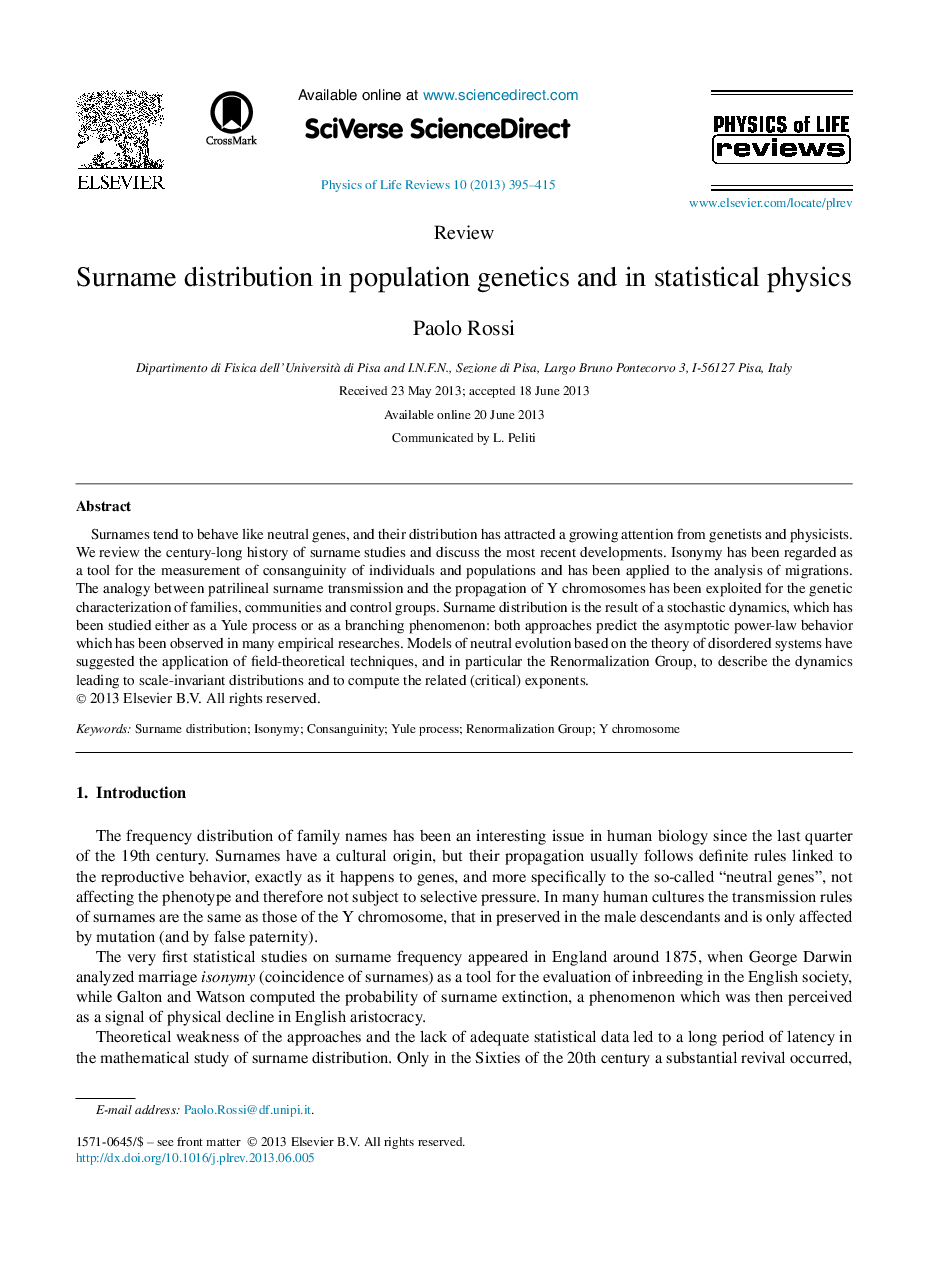| کد مقاله | کد نشریه | سال انتشار | مقاله انگلیسی | نسخه تمام متن |
|---|---|---|---|---|
| 1868600 | 1530895 | 2013 | 21 صفحه PDF | دانلود رایگان |

• We review the history of surname studies related to genetics.
• We describe the models of surname evolution and their predictions.
• We analyze the Renormalization Group approach to surname distribution.
• We discuss how to parametrite samples of frequency distributions.
Surnames tend to behave like neutral genes, and their distribution has attracted a growing attention from genetists and physicists. We review the century-long history of surname studies and discuss the most recent developments. Isonymy has been regarded as a tool for the measurement of consanguinity of individuals and populations and has been applied to the analysis of migrations. The analogy between patrilineal surname transmission and the propagation of Y chromosomes has been exploited for the genetic characterization of families, communities and control groups. Surname distribution is the result of a stochastic dynamics, which has been studied either as a Yule process or as a branching phenomenon: both approaches predict the asymptotic power-law behavior which has been observed in many empirical researches. Models of neutral evolution based on the theory of disordered systems have suggested the application of field-theoretical techniques, and in particular the Renormalization Group, to describe the dynamics leading to scale-invariant distributions and to compute the related (critical) exponents.
Journal: Physics of Life Reviews - Volume 10, Issue 4, December 2013, Pages 395–415